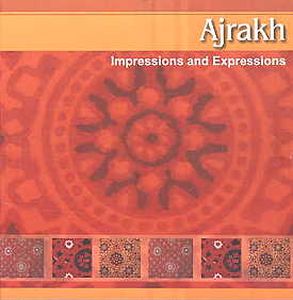
Contents: I. Introduction. II Archeological, Textual, and Historical References of Indian Textiles. 1. Earliest times to 1000 B. C. E. 2. Archeological remains relating to Indus Valley Civilization. 3. 1000 B.C. E. to 500 B.C.E. 4. Panini sixth century B.C.E. 5. Fifth century B.C.E. to second century B.C.E. 6. Second century B.C.E. to second century C.E. 7. Third to ninth century C.E. 8. Tenth century C.E. to thirteenth century C.E. 9. Fourteenth to seventeenth C.E. 10. Eighteenth century to today. 11. English. III. Traditional dyeing and printing styles using natural dyes. 1. Direct printing. 2. Resist dyeing and printing. 3. Ikat. 4. Batik wax/paste resist dyeing. 5. Bandhani tie and dye. 6. Laharia. 7. Mordant printing. 8. Discharge printing. 9. Painting. 10. Picchavi. 11. Phad painting. 12. Combination of painting and dyeing. 13. Kalamkari. 14. Combination of resist, mordant and direct block printing. 15. Malir and Jimmi.16. Gulbadan and Ghandbadan. 17. Dabu.18. Bagh Prints.19. Bagru Prints. 20. Sanganer prints. 21. Saudagiri Prints. 22. Ajrakh. IV. Traditional Dyes Used in Ajrakh. 1. Natural dyes. 2. Vegetable dyes. 3. Indigo. 4. Madder/Munjeet. 5. Mineral dyes. 6. Iron rust. 7. Iron oxide. 8. Mordants. 9. Mordanting.10. Mirabalan (Halileh). V. Ajrakh Yesterday and Today. 1. Ajrakh yesterday. 2. Ajrakh today. 3. Ajrakh definitions. 4. Philosophical basis. 5. History. 6. Provenance. 7. Ajrakh Motifs. 8. Ajrakh Making. 9. Ajrakh types based on processes used. 10. Variation of Ajrakh and its qualities. 11. Ajrakh Blocks. 12. Chronology of changes in Ajrakh dyeing methods. 13. Ajrakh today (21st century). 14. Modern methods of Ajrakh creation. 15. Trade conditions and production problems. 16. Current markets and their costing. 17. The factors that made the artisans stay with Ajrakh. 18. Dhamadka's current Ajrakh production method using natural dyes. VI. Steps towards craft revival. 1. New recipe developed comparing the results of traditional documented recipes and modifying these recipes. 2. Ajrakh motifs printed on different fabric origins using modified traditional recipe. VII. Stories of crafts rejuvenation. Bibliography.
"Ajrakh : Impressions & Expressions is a single source Indian reference book on the traditional and contemporary process of Ajrakh. This book provides Archeological, Textual and Historic references of Indian Textiles from early Vedic times through the centuries to the 21st century. It also provides details of traditional printing and dyeing methods using natural colours with special emphasis on Ajrakh and its rejuvenation. The book enlightens the meaning and significance of Ajrakh including all the natural dyes and auxiliaries used in the marketing of Ajrakh. Substitute sources of auxiliaries used in Ajrakh are also discussed in depth. It also includes motifs, design layouts and various dyeing and printing stages practiced in the making of a variety of Ajrakh. The book is made very interesting through the relevant pictures interspersed in the document. It also shows the ways in which Ajrakh can be rejuvenated using modified recipes and new designs that can be created. Value addition through regional embroidery is also discussed and shown through pictures. The adaptation of Ajrakh in apparel has been highlighted through various photographs of designed garments. The book ends with a section on the discussion of stories of Craft Rejuvenation of other Indian Traditional Textile Crafts. The challenges lying ahead due to a greater demand resulting from the ever increasing acceptances and demand for Ajrakh are discussed. This book will serve as a guide in producing quality Ajrakhs with innovative designs on unexplored fabrics. This book will also guide artisans, textile designers, fashion designers, fabric printers, researchers, students, art lovers, historians and even the laypersons, interested in natural colours. It will also be of great use for Non Government and Government Organisations and the corporate sector who are interested in value addition of textiles, garments and made-ups."
